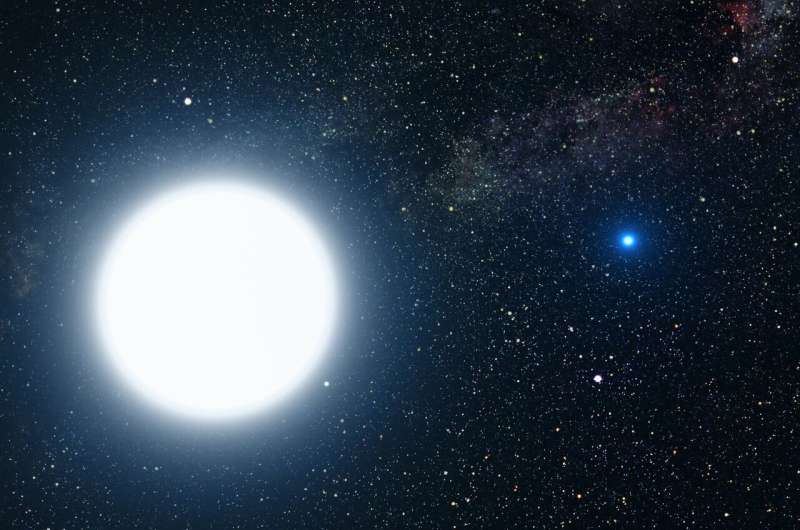Researchers reveal effects of magnetic activity on mass transfer of binary

Algol-type binary systems consist of a B-A-F type main-sequence primary component and an F-G-K type giant or subgiant secondary component. According to the explanation of the Algol paradox, the initially more massive component evolves to fill the Roche lobes first and transfer material to another component, which results in the inversion of mass ratio and the formation of the Algol-type systems. Hence, mass transfer plays an important role in the evolution of this kind of binary system.
A research team led by Prof. Qian Shengbang from the Yunnan Observatories of the Chinese Academy of Sciences analyzed the magnetic activity of interacting binaries and revealed its effects on the mass transfer of the binary. The study was published in The Astronomical Journal on Dec. 23.
The researchers analyzed the binary system KIC 06852488. Its primary component is a δ Sct-type pulsating star in the main-sequence stage, and its secondary component is a late-type component with a strong magnetic activity.
They found that the variation of the two maxima in the light curve was related with a same cycle length ~2000 days and a 180°phase difference, and the variation of the secondary maxima coincided with the O-C curve of primary light minima.
"The variation of light curve of KIC 06852488 is strongly correlated with the variation of O-C curve," said Shi Xiangdong, first author of the study.
After analyzing the Kepler and Transiting Exoplanet Survey Satellite (TESS) light curves, the researchers detected that this binary is a semi-detached system with a mass ratio 0.46. The secondary component is filling its critical Roche lobe.
"The variation of the O'Connell effect could be explained by an evolving hot spot on the primary component and an evolving cool spot on the secondary component, and their positions are almost symmetrical with the inner Lagrange L1 point," said Prof. Qian. This reveals that the mass transfer of the binary may be related to the magnetic activity.
The flares, pulsation of component, mass transfer and spot activity make the system a natural astrophysics laboratory for studying the interaction of binary mass transfer, stellar pulsation and magnetic activity.
More information: Xiang-dong Shi et al. Flaring and Spot Activities on the Semi-detached Binary System KIC 06852488, The Astronomical Journal (2020).
Journal information: Astronomical Journal
Provided by Chinese Academy of Sciences





















